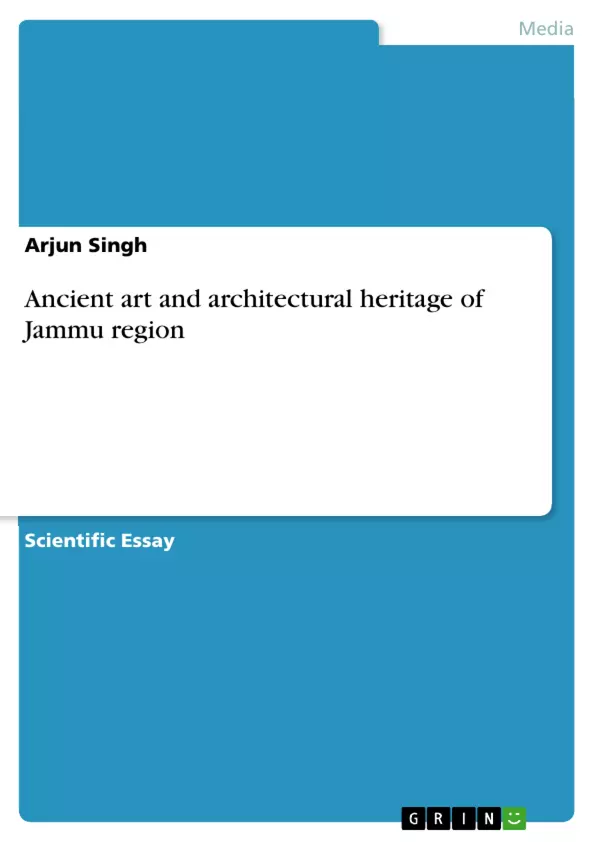The art and architecture disseminated to the other parts of India and the region of Jammu did not lag behind as compare to other art and architecture of the cultural material. The remnants of art and architecture, coins and tools, as well as other archaeological objects, which have been discovered in appreciable quantities, serve as first hand pictorial and material sources for the ancient cultural history of Jammu region. The culture of the people of Jammu region has been blended out of diverse elements, both indigenous and exotic. This culture has its roots in the pre-historic modes of primitive human society, growing through various stages of evolution and enriched and polished by numerous tribes and communities entering the region from abroad and from within India. The traditions of culture, art and architecture, religion, craft folk art spontaneously flow uninterrupted from the popular activities of the past. The past generations of Jammu region seem to have left behind a rich legacy of all such socio-cultural aspects.
Inhaltsverzeichnis (Table of Contents)
- (i). TRADITIONS IN ARCHITECTURE
- STONE TEMPLES OF ANCIENT PERIOD
- (a). The vimāna or the shrine
- (b). The antrāla or vestibule
- (c). The mandapa or the assembly hall
- (iii). ANCIENT TEMPLES OF JAMMU REGION
- (a). KRIMCHI GROUP OF TEMPLES
Zielsetzung und Themenschwerpunkte (Objectives and Key Themes)
This work aims to provide a comprehensive understanding of the ancient art and architectural heritage of the Jammu region in India. It analyzes the evolution of temple architecture, from the earliest stone structures to the brick-built temples of later centuries. The text examines the cultural influences that have shaped the region's artistic and architectural traditions, highlighting the significance of these remnants for understanding the cultural history of Jammu.
- The evolution of temple architecture in Jammu
- The cultural influences that shaped the art and architecture of Jammu
- The significance of ancient temples as sources for understanding the cultural history of Jammu
- The specific architectural styles and components of temples in Jammu
- The role of oral traditions and legends in understanding the history of Jammu
Zusammenfassung der Kapitel (Chapter Summaries)
The text begins by discussing the traditions of architecture in Jammu, highlighting the diverse cultural influences that shaped the region's artistic heritage. The main focus is on the evolution of temple architecture, which is traced back to the 9th and 10th centuries A.D. The text then examines the features of ancient stone temples, outlining their key structural elements and their gradual development over time. These elements include the vimāna (shrine), the antrāla (vestibule), and the mandapa (assembly hall).
The chapter on ancient temples of Jammu region explores the significant Krimchi group of temples, which exhibit the Nāgara style of temple architecture. The text provides a detailed analysis of individual temples within this group, highlighting their structural characteristics and decorative motifs. Each temple is described, including its layout, dimensions, and notable features.
Schlüsselwörter (Keywords)
This text focuses on the key concepts of ancient art, architectural heritage, temple architecture, cultural influences, Jammu region, India, Nāgara style, Krimchi group of temples, and historical analysis.
- Citation du texte
- Dr. Arjun Singh (Auteur), 2014, Ancient art and architectural heritage of Jammu region, Munich, GRIN Verlag, https://www.grin.com/document/285860



